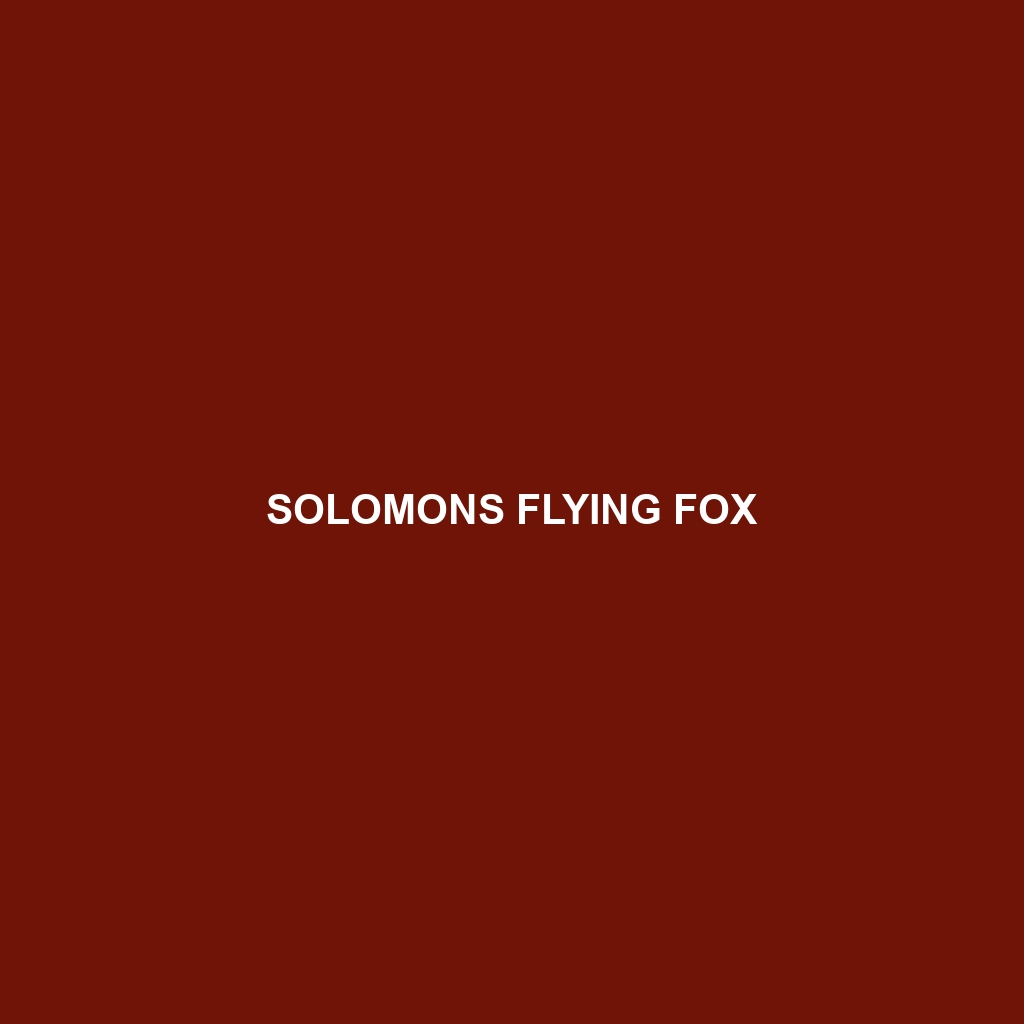Common Name: Solomons Flying Fox
Scientific Name: Pteropus rayneri
Habitat:
The Solomons Flying Fox is primarily found in the Solomon Islands, specifically on the islands of Guadalcanal, Malaita, and Florida. This species thrives in tropical rainforest environments, particularly in lowland and montane regions where it roosts in large trees. The bat prefers areas with plentiful food sources, usually located near fruit-bearing trees and flowering plants.
Physical Characteristics:
The Solomons Flying Fox is a large bat, with a wingspan reaching up to 1.5 meters (4.9 feet) and weighing between 300 to 600 grams (0.66 to 1.32 pounds). It is characterized by its distinctive dark brown to black fur with lighter-colored fur on the face and neck. Notable features include large, expressive eyes that are adapted for low-light conditions, as well as elongated, broad wings which allow for agile flight. Their sturdy bodies are adapted to cover vast distances in search of food.
Behavior:
Solomons Flying Foxes are mainly nocturnal, spending their days roosting in trees and becoming active after sunset. They are social animals and often form colonies ranging from a few dozen to several hundred individuals. These bats communicate through a series of vocalizations and use their excellent sense of smell to locate food. Migrations are noted during specific seasons as they search for optimal foraging areas.
Diet:
The diet of the Solomons Flying Fox primarily consists of fruits, nectar, and flowers. They are known to enjoy a variety of tropical fruits such as bananas, mangoes, and papayas. As pollinators, they play a significant role in the ecosystem by helping to fertilize flowers while feeding, which directly supports the growth of numerous plant species.
Reproduction:
Breeding for the Solomons Flying Fox generally occurs once a year, usually during the wetter months when food is abundant. Females typically give birth to a single pup after a gestation period of about five months. Offspring are born blind and rely heavily on their mothers for nutrition and protection during their early development. Remarkably, mothers will often carry their young while foraging for food.
Conservation Status:
The Solomons Flying Fox is currently classified as Endangered on the IUCN Red List. The primary threats to their survival include habitat loss due to deforestation, hunting pressures, and climate change, which affects their food sources and breeding grounds. Conservation efforts are crucial to ensure the survival of this vital species.
Interesting Facts:
One fascinating aspect of the Solomons Flying Fox is its role as a seed disperser, which is essential for maintaining the health of its natural habitat. Additionally, these bats can travel several kilometers in search of food, showcasing their impressive navigation skills and endurance.
Role in Ecosystem:
The Solomons Flying Fox plays a critical role in its ecosystem as both a pollinator and seed disperser. By feeding on fruits and nectar, these bats facilitate plant reproduction and promote biodiversity within their habitats. Their activities contribute to the overall health of the tropical forests of the Solomon Islands, influencing the survival of various plant and animal species.
